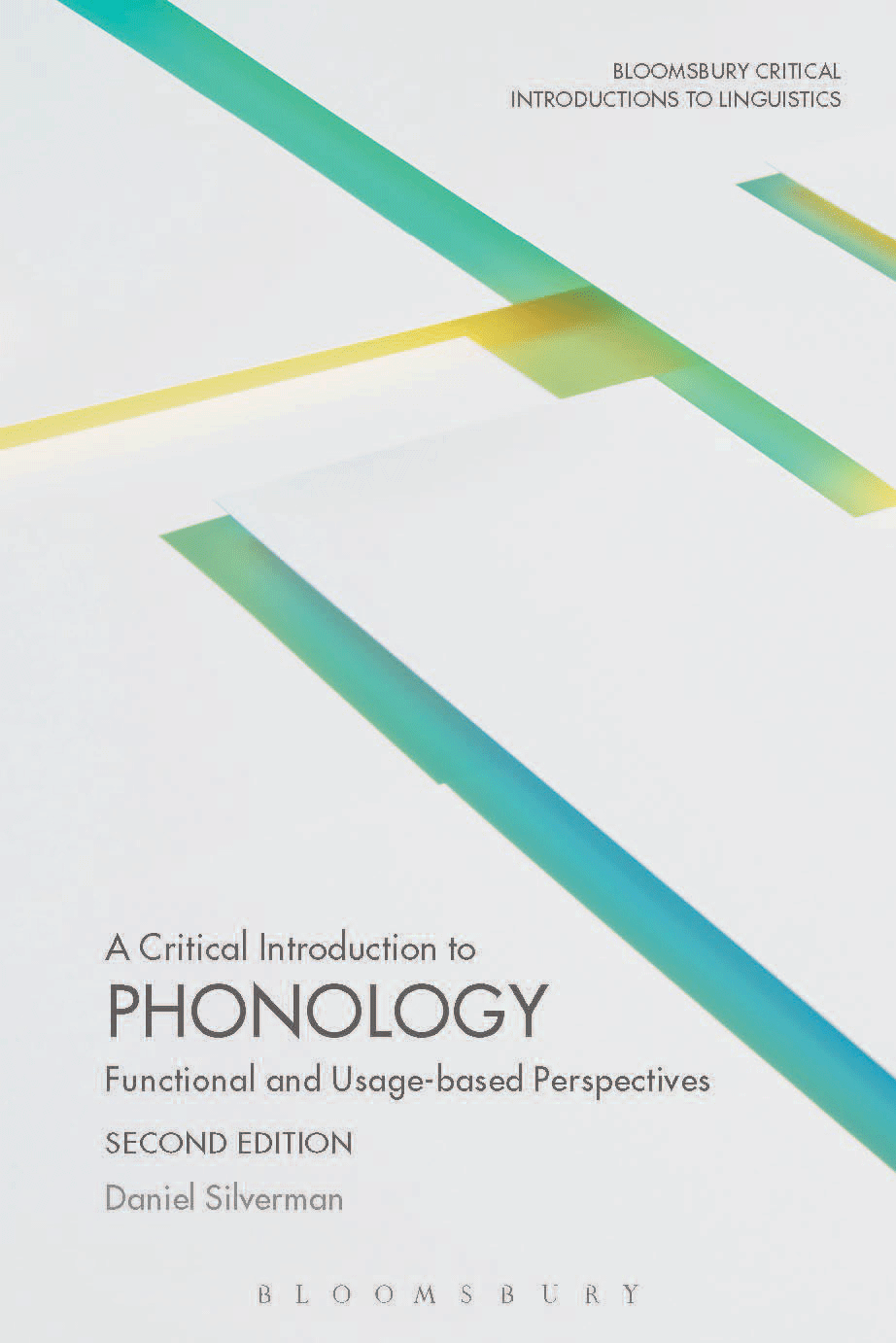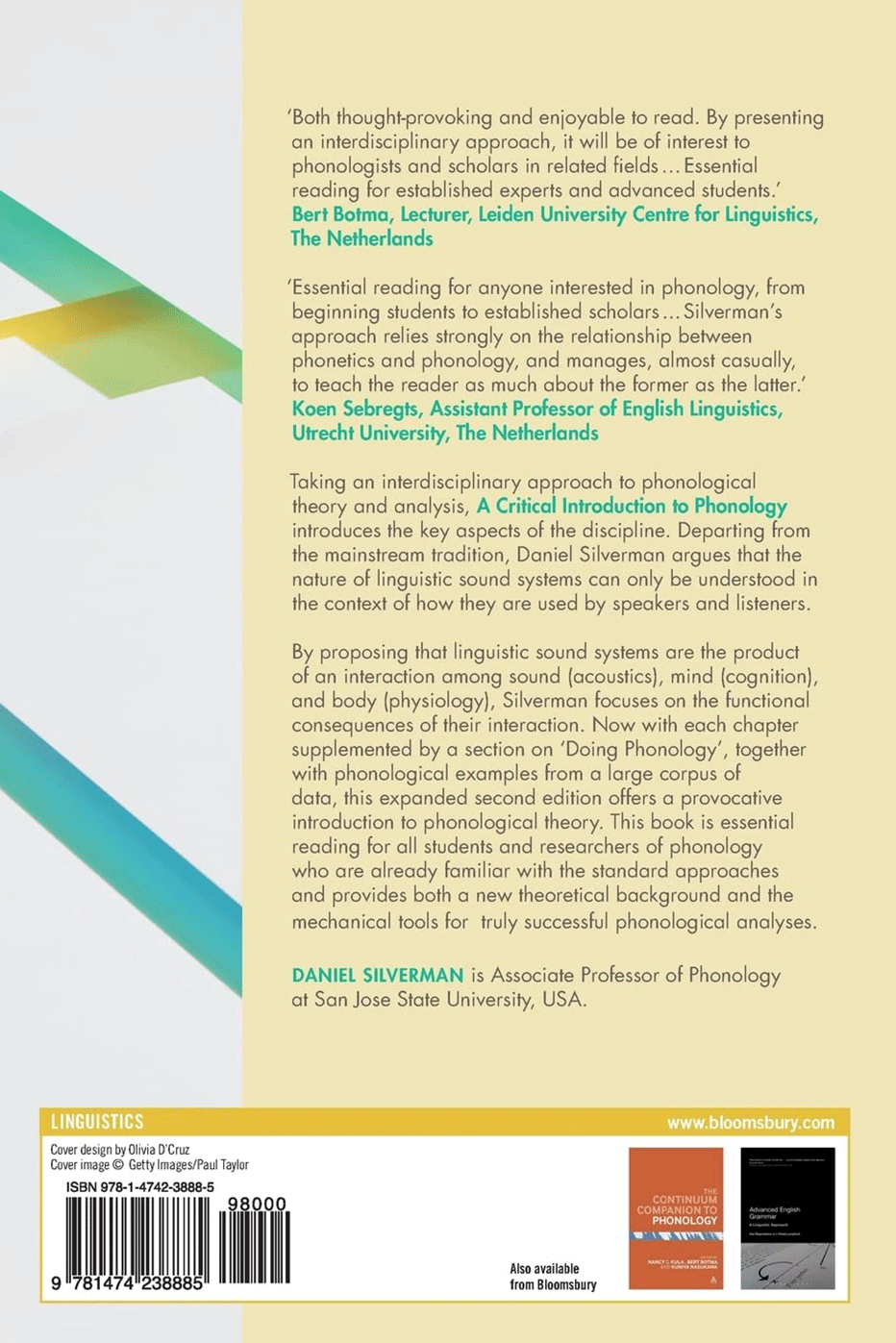| Silverman, Daniel. 2017. A Critical Introduction To Phonology: Functional and Usage-Based Perspectives. Bloomsbury Academic. |
"Daniel Silverman's thought-provoking book is essential reading for anyone interested in phonology, from beginning students to established scholars. In it, he manages to discuss all the issues phonologists care deeply about - from children's acquisition of sound-meaning mappings to sound change taking place over generations - while challenging many of the fundamental notions of mainstream phonology. This new edition includes well-known phonological problem sets that demonstrate how to 'do' phonology in the framework he proposes - a framework that is both innovative (as it rejects a number of core assumptions that many introductory textbooks take for granted) and firmly embedded in a tradition of over a century of scholarship, quoted throughout the book. Silverman's approach relies strongly on the relationship between phonetics and phonology, and manages, almost casually, to teach the reader as much about the former as the latter." Koen Sebregts, Assistant Professor of English Linguistics, Utrecht University, Netherlands |
This book on phonology can be read not only by linguists, but also by philosophers, anthropologists, psychologists, evolutionary biologists, and computer scientists. It’s been my experience that experts in these fields often harbor a passing interest in linguistics, but quickly hit a brick wall when trying to penetrate the theoretic intricacies of the discipline. This book is written with these scholars very much in mind, because the approach espoused herein does not call upon the reader to make any concessions to the particularism that dominates mainstream linguistic theory. My hope is to establish a dialogue with these scholars by leveling the playing field: phonology, when done right, is not the exclusive domain of linguists, but should be open to all who can make a contribution to our thinking. In turn, experts in other fields might find that we phonologists can make a contribution to theirs. The book espouses an approach to phonology that is interdisciplinary in scope. Phonetic theory is featured quite prominently, but both evolutionary biology (as metaphor) and cognitive psychology make significant appearances as well. Phonology herein is viewed as a self-organized and self-sustaining system of social conventions that passively evolves as a consequence of language use. Due to the limited variation that is inherent to speech production, phonological systems are at once sufficiently stable to fulfill their communicative function, and sufficiently variable to be under constant—if slow-going—modification. Systemic changes are often the consequence of the communicative success or failure of the word variants that we use. Successful speech propagates; today’s spontaneous, unplanned innovation may become tomorrow’s new norm. An indebtedness to Darwin’s theory of evolution by natural selection should be apparent even to the most casual of readers. As the book assumes no previous knowledge of either phonology or linguistics in general, it may even be of interest to the general reading public. If you can make it past Chapter Two—the most difficult chapter in the book—then the remainder may prove quite accessible, and dare I say, enjoyable. For students of phonology, the content of this book may help to hone their analytical skills. It might help solidify their own inclinations on the subject, or better, it might instead help them “liquefy” their thinking, giving them the impetus to ask their professors some challenging questions, or to rethink certain received notions as they embark on writing their dissertations. For established scholars who teach phonology, this book may serve as a supplement/alternative to mainstream books. Thinking positively, I envision much constructive class discussion emerging. Phonologists will be quick to note my indebtedness to a number of schools of linguistic thought. The Kazan School is featured quite prominently, but strong traces of both The Prague School and American Structuralism are present as well. The influence of the Generative School should be obvious, since rule-based and constraint-based analyses are featured, though re-conceptualized as generalizations about sound change. Finally, the phonological theories of John Ohala served as a constant source of inspiration. So if this book is for established experts, for students of phonology, for experts in other fields, and also for absolute beginners, then I guess this book is for everybody. Ah, would that it were true! Truth is, phonology isn’t easy (and over the years, I’ve noticed that some people find it a tad esoteric…): it focuses on the most obscure minutiae of the most everyday and natural of topics: spoken language. It requires patience, concentration, and most importantly, an ability to wipe clean one’s subjective feelings about the language that one uses, and to place in their stead a rigorous objectivity. But phonology is not the exclusive domain of linguists or academics. It can be understood and appreciated by anyone who is ready to expend a little effort. 11.22: I recently took the book off the shelf for the first time in several years to have a read. I discovered a few stupid errors: typographic, punctuation, spelling, grammar, usage. Sorry. I stand by the content though. If you feel I shouldn't, I'd love to hear from you.
 |

















